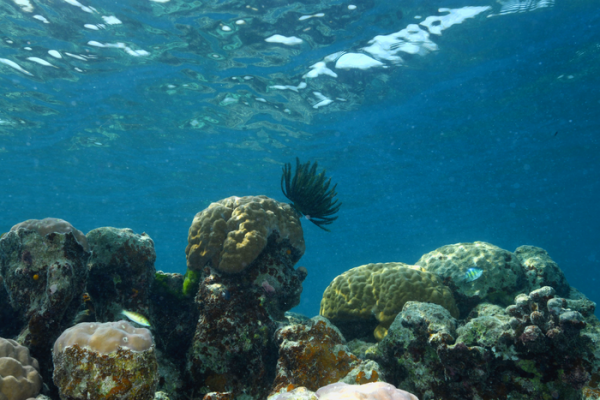Ocean warming is driving an increase in the frequency and severity of marine heatwaves, causing untold damage to coral reefs. Tropical corals, which live in symbiosis with tiny single celled algae, are sensitive to high temperatures, and exhibit a stress response called bleaching when the ocean gets too hot. In the last 4 decades, marine heatwaves have caused widespread bleaching, and killed millions of corals. Because of this, a global search is underway for reefs that can withstand the heat stress, survive future warming, and act as sources of heat-tolerant coral larvae to replenish affected areas both naturally and through restoration.
Now, scientists studying reefs in Palau, an archipelago in the western tropical Pacific, have identified genetic subgroups of a common coral species that exhibit remarkable tolerance to the extreme heat associated with marine heatwaves. Further, the scientists found evidence that larvae from these corals are traveling from their birthing grounds deep in Palau’s lagoons, to the outer reef, where they survive and grow, and maintain their heat tolerance.
Understanding both the underlying mechanisms that facilitate heat tolerance of these corals, as well as the dispersal capabilities of their larvae will go a long way toward enhancing coral reef conservation and restoration efforts in the 21st century ocean, according to scientists at the Woods Hole Oceanographic Institution (WHOI) who led the research.
Read more at: Woods Hole Oceanographic Institution
Porites cf. lobata is a key reef-building coral that provides habitats for numerous species, including feather stars (comatulid crinoids) and fish. (Photo Credit: Kharis Schrage, ©Woods Hole Oceanographic Institution)


